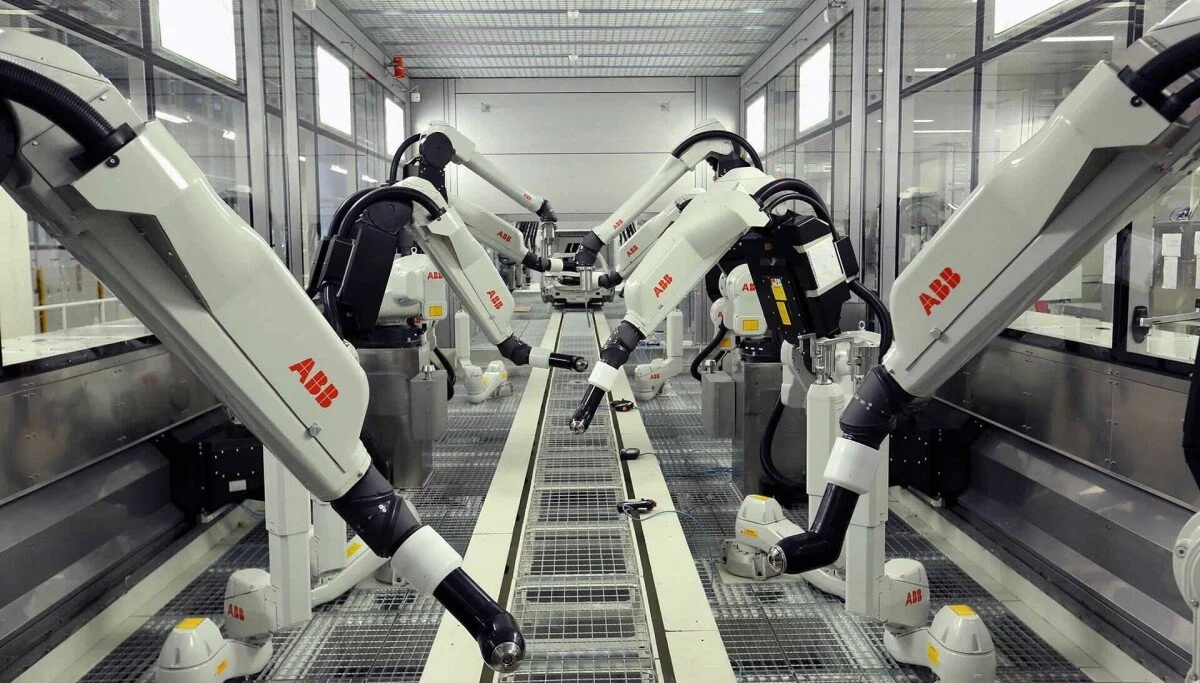Financing the Factory of the Future
Credit: ABB
Blending RaaS, outcome contracts and vendor finance without fuzzing accountability
Capital budgets remain unpredictable, yet the pressure to automate doesn’t abate. The financial innovation of the moment is not exotic; it is pragmatic layering of instruments that let buyers adopt robotics without overcommitting. RaaS converts some capex to opex, outcome-based maintenance aligns spend to delivered throughput or uptime, and vendor or third-party financing bridges timing gaps between commissioning and realised benefits. The art is using these levers without blurring responsibility for safety and performance.
RaaS has graduated from curiosity to credible option. Industry associations position it as a way to overcome adoption hurdles, particularly for mid-market manufacturers that cannot tolerate long payback horizons. The model usually bundles the robot unit (or fleet), software, monitoring and field service into a single recurring charge, with options to scale seats or pause capacity. Two points keep it credible: transparency on what happens at end of term, and clarity on who carries safety obligations throughout the life of the unit.
Outcome-based contracts complement RaaS but are not identical. They hinge on instrumentation and process control: telemetry from the unit, explainable model updates, and change-management logs that link adjustments to results. Without that, “outcomes” devolve into disputes. Standards help. When both sides key their commissioning and change records to ISO 10218/10218-2 templates (and, where relevant, ISO/TS 15066 for collaborative operation), they have a shared frame for what “safe and within spec” means, even as recipes change.
Vendor finance and channel-led leasing remain workhorses, particularly when buyers want eventual ownership. The difference now is the software layer: subscriptions for fleet management, perception updates and remote support often outlive the initial repayment schedule. That requires careful packaging so buyers don’t discover “shadow opex” later. Explicitly listing software and service line items, their renewal cycles and their linkage to safety documentation is dull but decisive in preventing friction.
GTM thinking here sounds more like underwriting than sales theatrics. Vendors who can show their serviceability (mean-time-to-repair targets, spares posture, remote diagnostics) and their safety governance (who signs what at each change, and which standards apply) are favoured by risk committees. A3’s Certified Robot Integrator Programme provides an externally recognisable signal that integration and safety processes meet a baseline—useful when finance teams need to explain risk controls.
There is also the regulatory horizon to consider for AI-enabled units. Where AI features elevate risk classification—particularly in Europe—buyers will ask whether vendors have mapped their software and updates to recognised governance frameworks. NIST’s voluntary AI Risk Management Framework (AI RMF) is becoming a common touchstone in US-centric deals; in the EU, the AI Act sets phased obligations and timelines that suppliers selling into Europe should understand. Treating these as part of the financing plan—rather than afterthoughts—reduces surprises during credit review.
In short, “future factory” finance works when the concept matches the physics: clear ownership of safety and performance, visible KPIs to support outcome claims, and structures that can scale without re-negotiation each time the mix changes. The money then becomes an enabler, not a source of friction.
